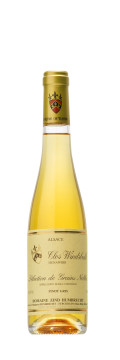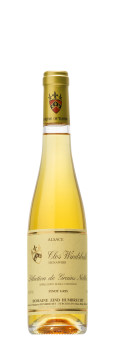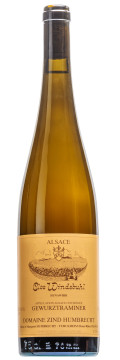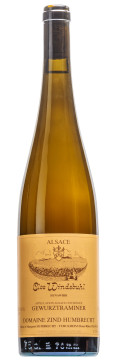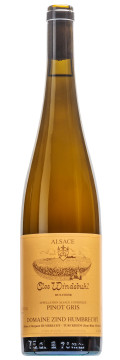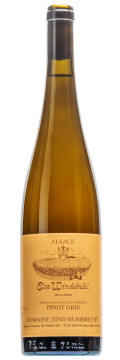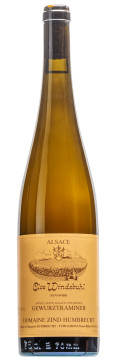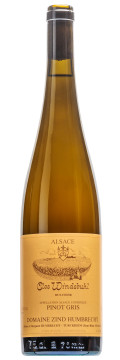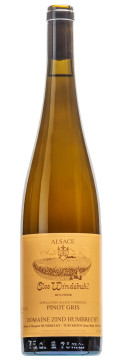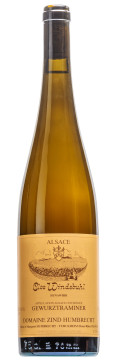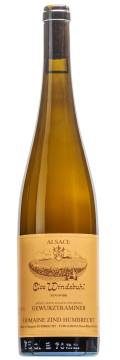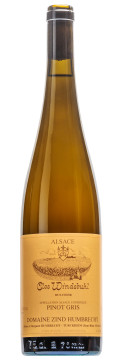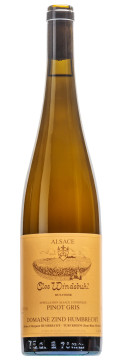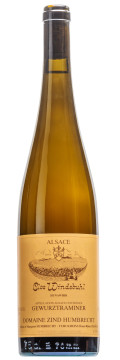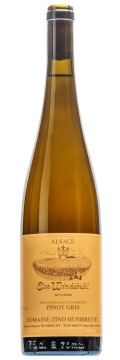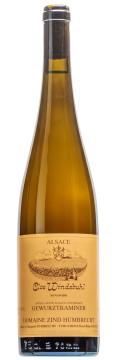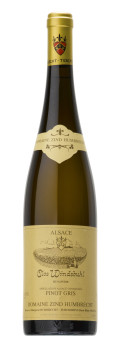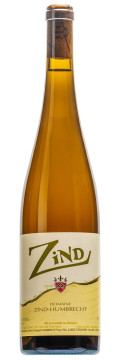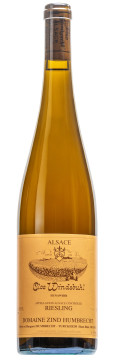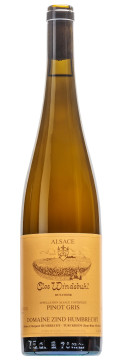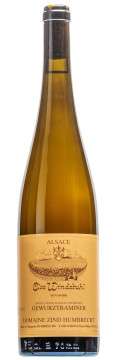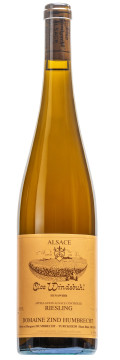The Clos Windsbuhl of Hunawihr
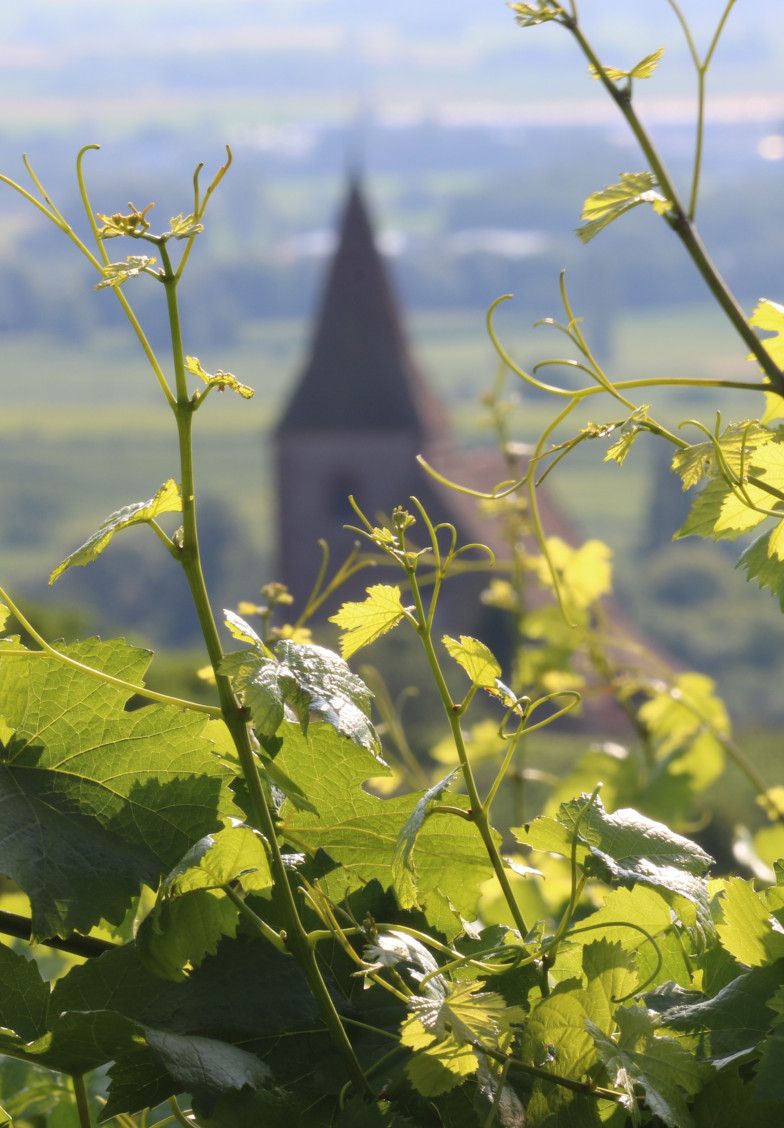
History
Writings and praise for the Windsbuhl are numerous and its history goes back a long way. J.J. Becker relates the story of the Windsbuhl in detail in his work “Geschichtliches über Erlach-Windsbühl bei Hunaweier” (1912).
The first mention of the Windsbuhl goes back to 1324 when the Domaine was known as Erlach. When the Count of Ferrette died in 1324, Erlach became the property of the House of Austria through the intermediary of Albrecht of Austria, the Count of Habsbourg, who had married the daughter of the Count of Ferrette. The Domaine remained in Habsbourg ownership until 1648 (the Treaty of Westphalia). In 1481, the Rathsamhausen of the “Zum Stein” branch took over the ownership and management of Erlach.
From 1530 to 1732, the Rathsamhausen zum Stein rented Erlach to the town of Riquewihr for two terms of 101 years. Various vineyard managers succeeded each other, notably the court preacher Joachim Stoll from 1647 to 1678. During 1667 and 1668, a contagious disease spread throughout Alsace and the towns of the Rhine, many citizens from the nearby village of Ribeauvillé were infected. To escape its ravages, the stately household of Ribeaupierre removed to Wihr au Val. Joachim Stoll chose Erlach as an intermediary station where he had a house built “at great expense” amongst the vineyards on the hill located on the Erlach Domaine. In 1668 he renamed this hillside Windsbuhl.
From 1732 to 1734 Erlach-Windsbuhl was again leased to the village of Riquewihr. From 1734 to 1758, the Domaine was rented by Siegfried von Bernholdt (aide de camp and Marshal of France) and Marie Louise de la Pailleterie (a Rathsamhausen zum Stein daughter) with different lessors from Riquewihr and Hunawihr. Von Bernholdt built the large Windsbuhl house (as it exists today) in 1760 and laid out the vineyard in its current configuration on the hill around his property.
In 1760 the planting of vines in the plain was subject to a quota by royal decree. Many vines were pulled up. The Windsbuhl vineyard, planted with noble grape varieties (“Edelgewächse”) had gained a great reputation in Strasbourg. In those days, the wines commanded a high price in the old wine market. The author found archives where the Hunawihr wines cost three times the price of wines from other communes. On 6 July 1796, the whole of Erlach-Windsbuhl became the property of M. Nicolas Pasquay. At that time, the property comprised fields (1 hectare), arable land (4 ha), chestnut grove (12 ha) and 6 hectares of vines. From1800, the Windsbuhl was worked by the Hoffmann family. J. Becker reminds us that the noble wines of Windsbuhl, red wines and “Tockayer” as well as other quality grapes were avidly sought after by wine connoisseurs.
Wine brokers of the region brought their clients from all over Europe to the Windsbuhl to buy wines in barrel. The Windsbuhl vineyard experienced a very prosperous period towards the end of the 19th century. The entire property of Erlach-Windsbuhl was purchased by M. Albert Meyer of Strasbourg who completely redeveloped the property and increased the wooded area. The wines from the Windsbuhl acquired a reputation far beyond the borders of Alsace, as one would expect of an ancient imperial property. In 1987, Domaine Zind Humbrecht bought the Clos Windsbuhl vineyard from Mme. Bérangère Meyer, vinifying the first wines from this prestigious Clos in 1988.
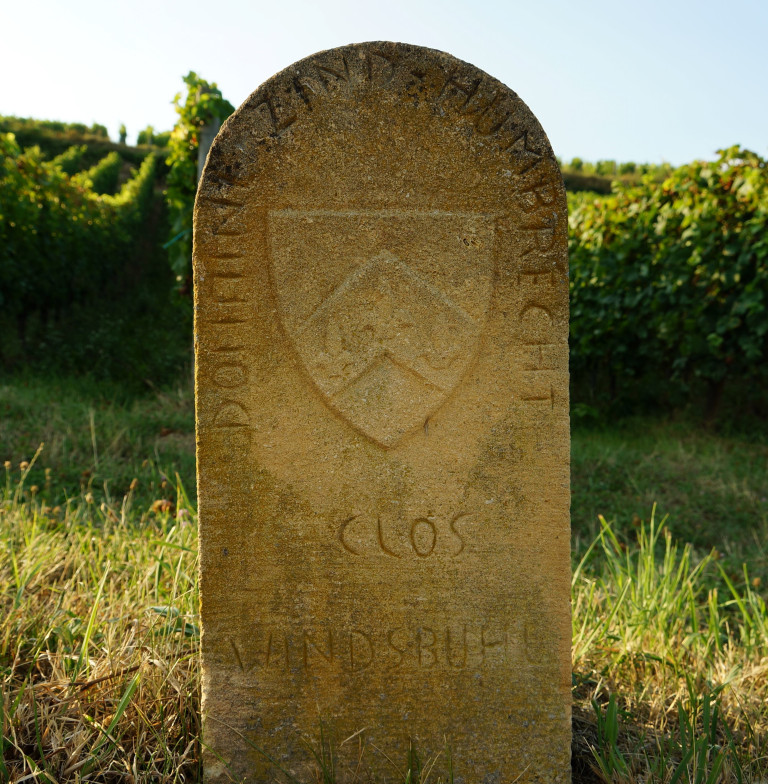
Terroir
The Clos Windsbuhl is located in the commune of Hunawihr, approximately 15km from Colmar, overlooking the fortified church of Sainte Hune. The Clos Windsbuhl faces south to south-east. With its average to steep slope (between 15 – 40%), the small Windsbuhl hill is at a high altitude for Alsace, at around 350 m above sea level.
The vines grow in a shelly limestone substratum (muschelkalk) rich in clay and chalky rock. The soil is very thin in certain areas and the country rock often outcrops in the middle of the slope. It is well worth noting that the Windsbuhl lies on a soil structure quite different from the rest of the commune.
The degradation of limestone by microbial activity results in the presence of clay in the soil which contributes to interesting expressions of minerality in the wines from this cru.
The proximity to the Vosges Mountains protects the Windsbuhl from northern winds. Its situation and higher altitude makes the Clos Windsbuhl a late ripening terroir. Budburst and flowering are on average 15 to 20 days later than the earlier ripening terroirs of Alsace and the Clos Windsbuhl is usually one of the last terroirs to be harvest at the Domaine.
The Clos Windsbuhl is well adapted to warmer vintages. The higher than average rainfall (650mm/year) associated with a soil which allows a deep descent of the root systems enables the vines to resist drought stress.
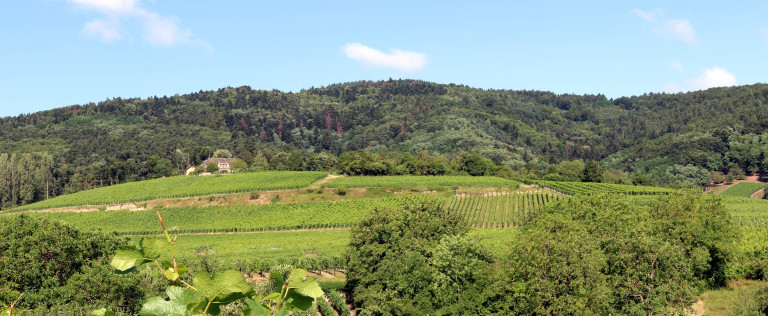
The Clos Windsbuhl wines from Domaine Zind Humbrecht
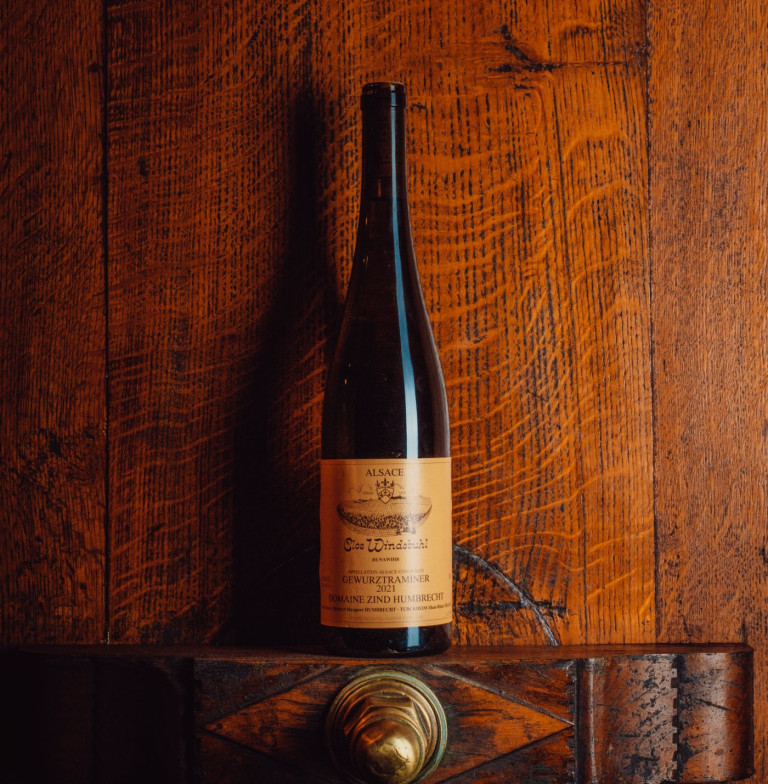
The Wines
The altitude of the vineyard coupled with Hunawihr’s tardy climate means that the Clos Windsbuhl is often one of the last of our vineyards to be harvested. This explains the aromatic quality of the Clos’ wines and the consistent balance of acidity, a guarantee of good ageing. Although often harvested late, the Windsbuhl grapes are only rarely botryitized, doubtless due to the altitude of the vineyard, but nevertheless often reach high levels of maturity.
Today, the Clos covers an area of 5.5 ha. The Pinot Gris is in the majority, followed by the Gewurztraminer and the Riesling. We also have a parcel of Chardonnay and Pinot Auxerrois, which is used for our “Zind”.
Georges Spetz, chronicler and author of “L’Alsace Gourmande” in 1914, established a list of the best villages and growths of Alsace. He cites the Kanzelberg of Bergheim, the Geisberg, the Trottacker and the Zanacker of Ribeauvillé , the Windsbuhl of Hunawihr, the Schönenburg and Sporen of Riquewihr, the Geisburger of Kaysersberg (Schlossberg), the Käferkopf of Ammerschwihr, the Brand of Turckheim, the Hengst of Wintzenheim, the Isenburg of Rouffach, the Kessler, Sähring (Searing), and Wann of Guebwiller, Ollwiller and the Rangen of Thann!
